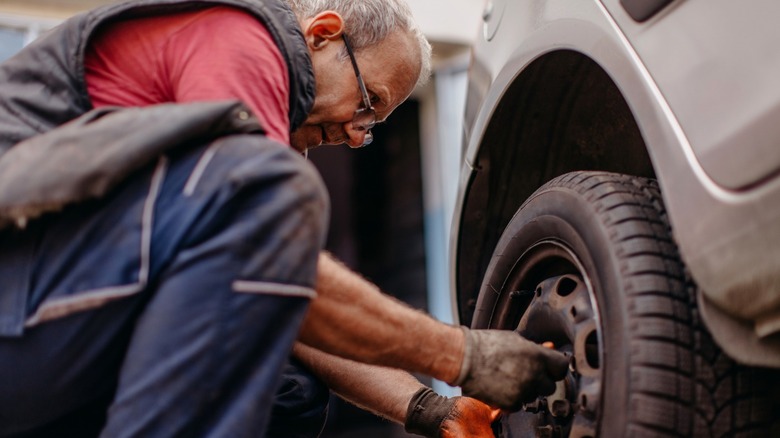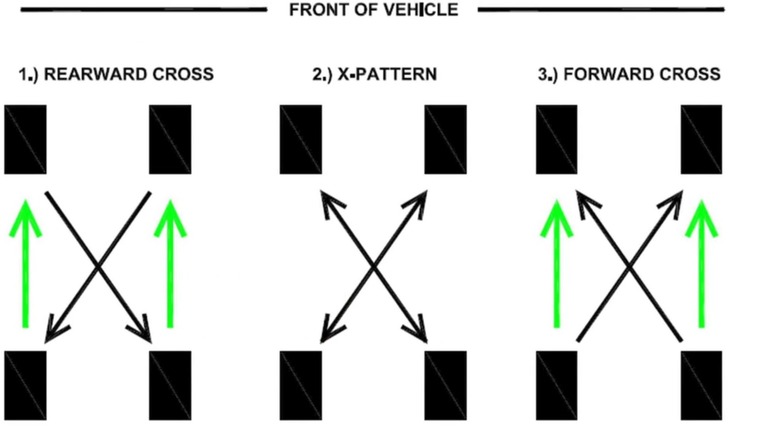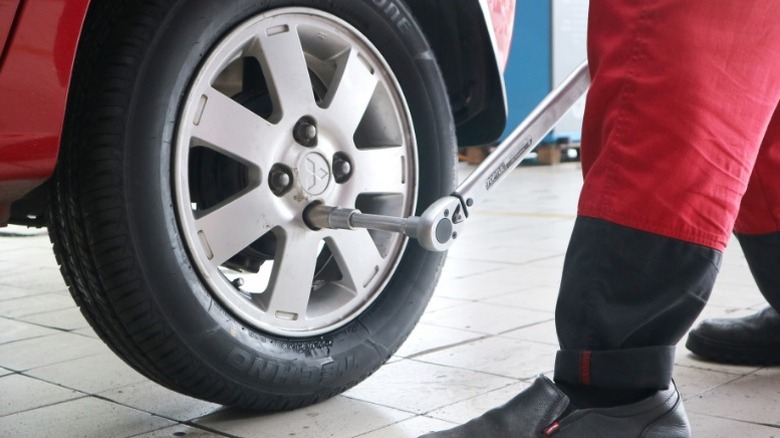What You Should Know When Rotating Your Own Tires At Home
Most drivers and people who rely on cars to get to and from various destinations understand that these vehicles require a lot of routine maintenance to stay in tip-top condition. That maintenance applies to basically every part of your car, including the wheels and tires. Your vehicle's tires, in particular, require frequent attention, especially if you want to avoid replacing them prematurely. New tires can typically last for three to five years when cared for properly, and a big part of that lifespan depends on how often you rotate your tires.
Tire rotations involve moving the front tires to the rear axle and the rear tires to the front axle. The service is vital for maintaining your tires' condition, as the rubber can wear differently, depending on where on the vehicle the tires are installed. Typically, a tire rotation service also includes a balancing service. Tire balancing services involve mounting the wheel and tire on a machine, which spins the tire to identify vibrations and shakiness. A trained technician will then attach wheel weights, either with high-strength glue or clips, to the wheels to balance them out and prevent excess vibrations while driving.
While many people visit their local repair shop or tire and lube shop for rotation and balancing services, that's not always necessary. If you have access to a few tools, like some automotive jacks and sockets to remove the wheels, you can perform the rotation part of this procedure from your own driveway. However, there are some things you should know before you get started, which is exactly what we're going to cover together. Here's what you should know before rotating your tires at home.
You should learn the common tire rotation patterns
The most basic tire rotation you can perform involves moving the front tires directly to the rear axle and the rear tires directly to the front axle. However, that's not always the most ideal pattern to follow for every vehicle. Depending on your car's drive-type (i.e., rear-wheel-drive, front-wheel-drive, and all-wheel-drive), there are a couple of other rotation patterns that can do a better job of protecting your tires.
For rear-wheel-drive vehicles, the ideal rotation pattern involves moving the rear tires directly to the front axle without switching sides, while the front tires should move to the rear axle and switch sides. That means that you should move your front-left tire to the right-rear position and the front-right tire to the left-rear position. Front-wheel-drive cars usually follow the opposite pattern — you should move your front tires directly to the rear axle and crisscross the rear tires when moving them to the front axle.
For all-wheel-drive vehicles, you should follow a double crisscross or X pattern, meaning the front tires cross sides when you move them to the rear axle and the rear tires also switch sides when you move them to the front axle. If your car has directional tires, like those that say outside or with arrows on the sidewalls, you cannot crisscross them during the rotation. Instead, perform the basic tire rotation described above, where you simply move the front tires directly to the rear axle and the rear tires straight forward to the front axle. There are other rotation patterns, like those for dually pickup trucks, for example. However, the four patterns described above are the most common and the most relevant to the majority of average drivers.
You won't be able to balance your tires at home, but you need to torque the wheels
Rotation patterns aren't the only thing you need to know when performing a DIY tire rotation. It's also wise to remember that you most likely won't be able to balance your tires during an at-home rotation — unless, of course, you have access to an expensive balancing machine, that is. While the balancing service isn't necessary, it is pretty important for helping to preserve your tires and improve your vehicle's handling, and you may want to consider paying for this service, even if you plan to perform the rotation yourself.
The next thing you need to know is that any time you remove the wheels and tires from your car, it's critical that you torque the lug nuts properly after reinstalling the wheels. Torquing the wheels is vital for a couple of reasons — it helps ensure that the wheels don't fall off while you're driving, as well as help prevent warping the brake rotors due to unevenly tightened lugs. To torque your wheels properly, you'll need a torque wrench, which you can buy from or rent from local auto parts stores or hardware stores.
You can find your car's lug nut torque specs by reading your owner's manual or searching for the information online. Once you have the torque spec, set your torque wrench accordingly, and then follow a star pattern to torque the lugs properly. Doing so is quick and simple and a vital way to protect yourself and your vehicle.


